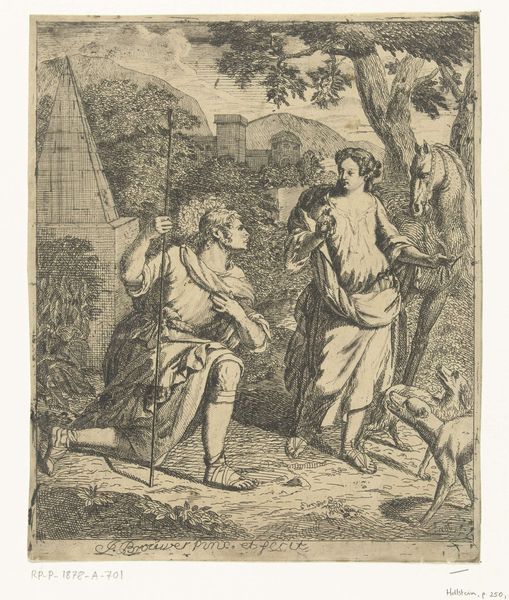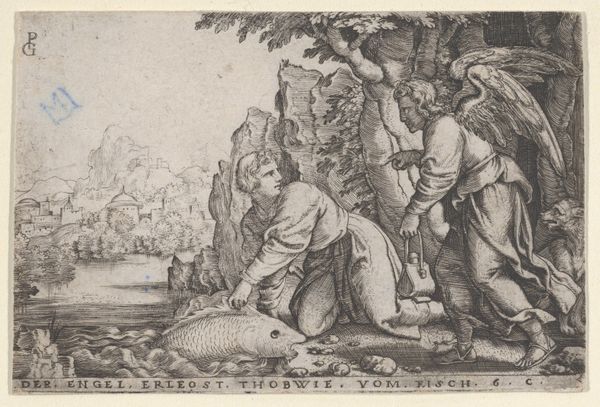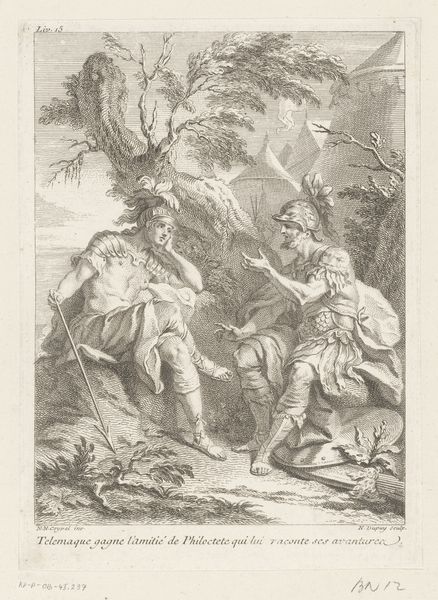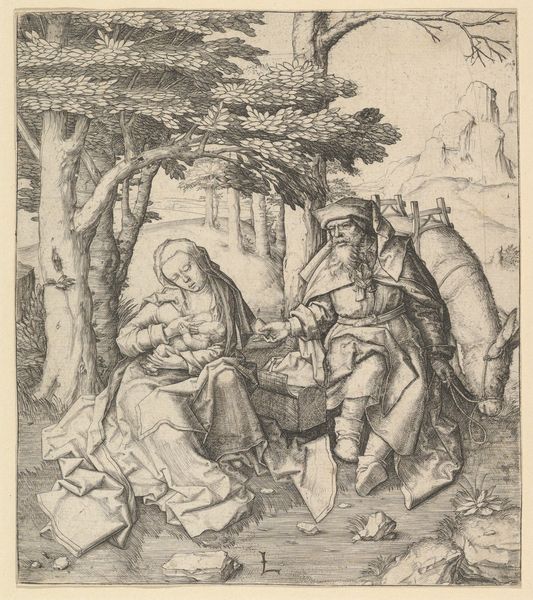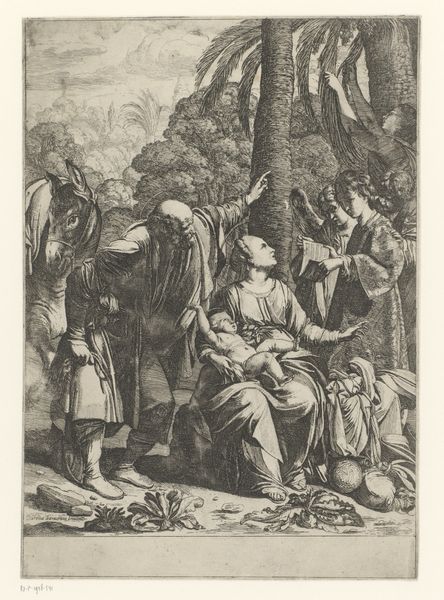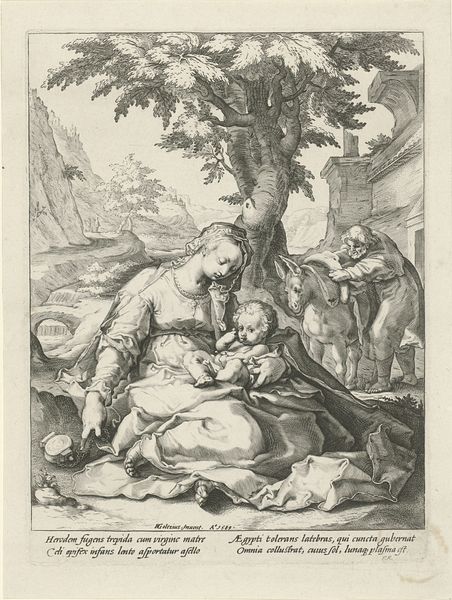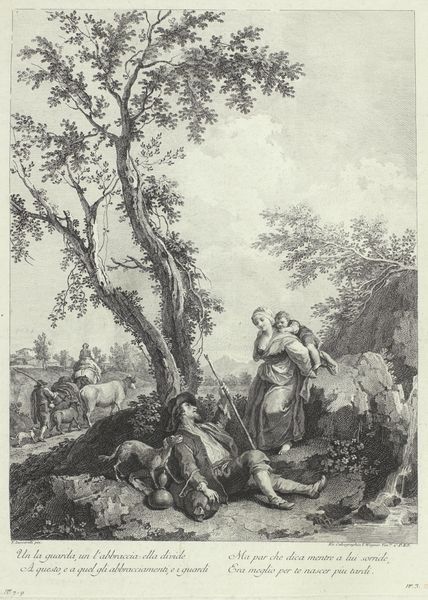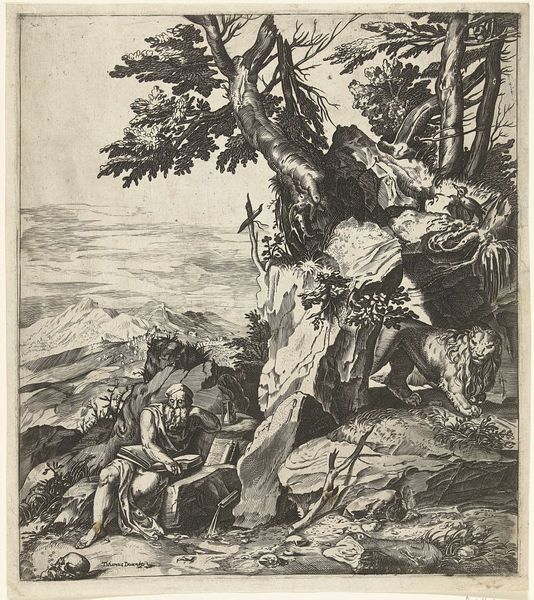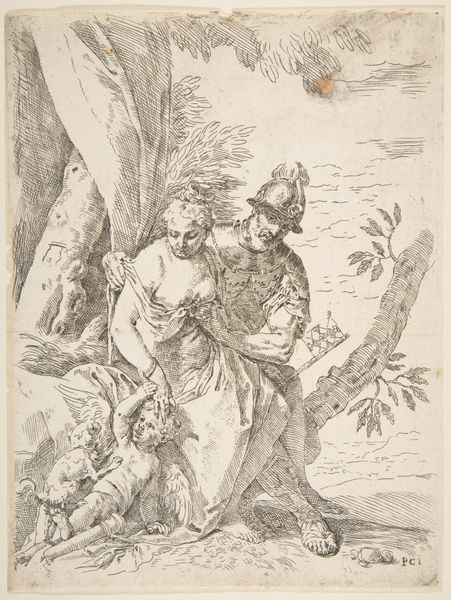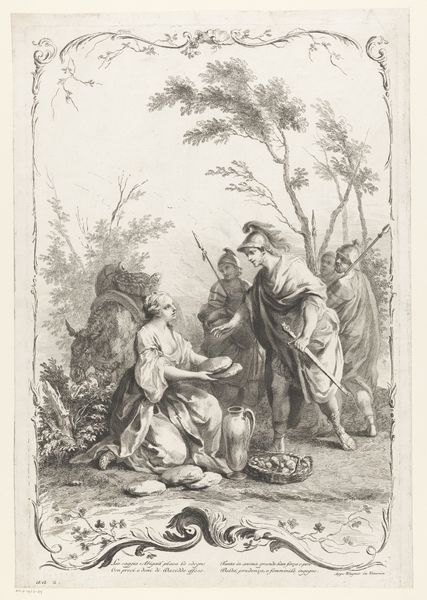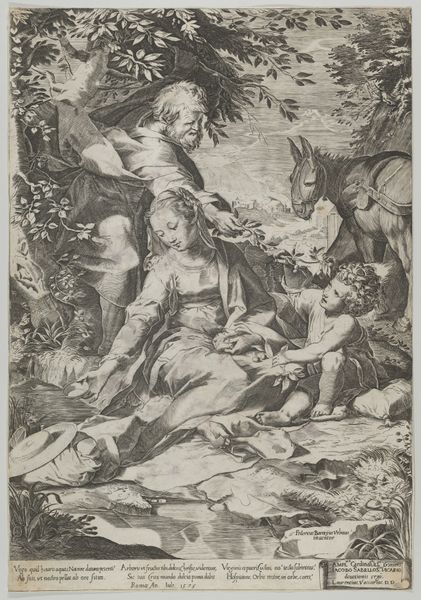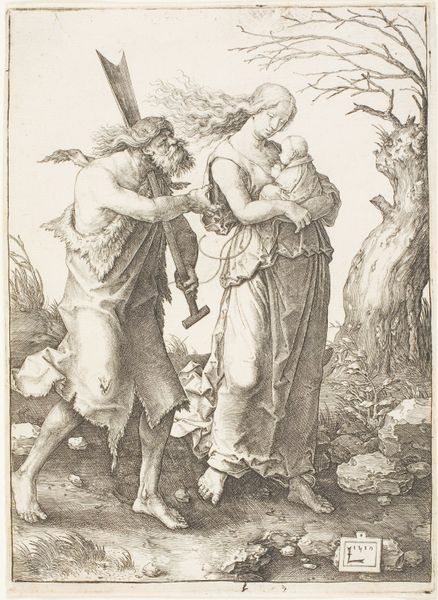
drawing, print, paper, engraving
#
drawing
#
narrative-art
# print
#
figuration
#
paper
#
history-painting
#
italian-renaissance
#
engraving
Dimensions: 391 × 289 mm (image/sheet, cut within platemark)
Copyright: Public Domain
Curator: Agostino Carracci’s "Jacob and Rachel," created in 1581, presents a compelling narrative scene rendered in engraving on paper. Editor: My first impression is one of rustic intimacy—the figures are monumental yet nestled within a somewhat claustrophobic composition. There’s a distinct air of biblical storytelling, rendered with an incredibly tactile approach to textures. Curator: It’s fascinating how Carracci employed the engraving technique to simulate different material qualities. Notice the contrast between Rachel's delicate clothing and the rough texture of the well. This speaks to an acute awareness of material expression, a hallmark of the Italian Renaissance engaging with materiality as an element that transcends pure representation. The printmaking also suggests dissemination and production practices—how would its relative affordability allow access to this story to circulate? Editor: I'm drawn to the symbolism woven throughout. The well, traditionally a source of life and community, acts as a focal point. Consider also the prominent presence of sheep, animals associated with gentleness and God’s flock, and of course, their connection to shepherding and this significant biblical love story between Jacob, disguised as a shepherd, and Rachel. Even that prominent coiled rope feels heavy with symbolic weight, a possible foreshadowing of future struggles or perhaps constraints within this destined union. Curator: Indeed. The rope is an important detail regarding craft production. Rope making was a significant industry tied to specific geographies and artisanal knowledge. This image doesn’t just depict a pastoral scene, but embeds subtle material and industrial histories related to early manufacturing in the European context. Editor: It seems the way Carracci frames this interaction through symbolic elements reveals deep themes of destiny, love, and faith, all made more potent by the somewhat harsh beauty that the black and white medium offers. It directs our attention to line and form, forcing us to decipher the narrative. The expressions, the positioning—it’s all orchestrated to deliver emotional weight and a sense of deep connection amidst humble surroundings. Curator: Considering Carracci’s method of layering narrative, industrial knowledge and a refined printmaking technique, we realize that his depiction of "Jacob and Rachel" offers us insight into a moment of historical intersection and transformation. It reminds us how the art object is intrinsically tied to material conditions, while presenting cultural significance. Editor: Reflecting upon these layered symbols and the palpable rendering of emotions and form through careful application of imagery, I appreciate how this print captures not only a specific moment but timeless qualities within a core story.
Comments
No comments
Be the first to comment and join the conversation on the ultimate creative platform.
